Good morning and thank you in advance for any assistance you can provide.
We recently converted a masonry wood-burning fireplace to a wood-burning insert, and the performance we are getting from our insert is not what we were expecting. I am not sure if my expectations are too high or if I am doing something wrong? The insert we purchased is Enerzone Destination 2.3 (https://www.enerzone-intl.com/en/products/wood-inserts/destination-23-i-wood-insert/) Based off the specs, this insert should be able to heat up to 2,100 square feet which is the square footage of our entire house. We are not using the insert as a primary heat source but rather supplemental heat.
I am experiencing is about 3-4 hours burn cycles and about 5 degrees of increase in temperatures on the main floor where the insert resides when we burn for about 4-6 hours. The outside temperatures are approximately 25-35 degrees. The spec sheet indicates 8 hours burn cycles. I consider a burn cycle as the time from when I load the wood to when it burns down to a bed of coals. Why am I only getting about half the burn time the manual states?
I read through many threads on this website to see how to improve performance. I am burning dry hardwood (oak and ash) that is reading about 10% moisture on my moisture meter. I am loading the firebox pretty full, but I am not packing it tight. I installed a block-off plate and placed 2" insulation above the plate. I did NOT place insulation around and behind the insert, but I could do if that would be recommended.
Our main level is about 1000 square feet and we have 8-foot ceilings. It's an open concept layout on the main level. Our family room has the insert which opens to a kitchen / dining room which opens to a living room and stair case that leads to the second level (which is another 1000 square feet).
I attached some photos of our insert. When the installers installed the insert, they had to chip away some of the existing brickwork to fit the insert. I am not sure if that is normal or not. Here are descriptions of the photos:
1) One photo shows above the fire insert before the block-off plate was installed.
2) One photo shows behind the fire insert
3) Two photos of the sides of the insert
4) Two photos of the block-off plate
Is what we are experiencing normal performance, or should we be getting better performance or am I doing something wrong?? Even the family room where the insert is installed does not get that warm. It increases about 5 degrees in temperature; I was thinking this room would get really warm to the point where we would want to turn down the heat. This has not been the case. It's warms the room, but not to the point where you want to turn it down.
If anyone has any input / advice for us, I'd really appreciate it.
Many thanks, Ryan
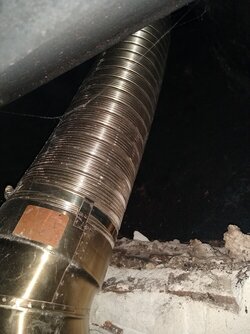
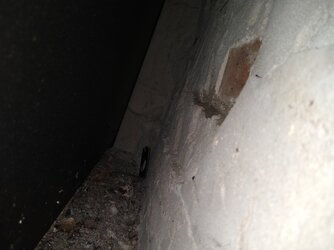
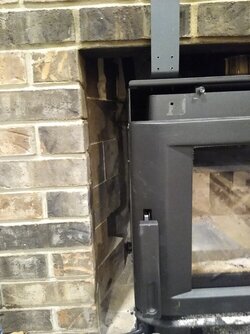
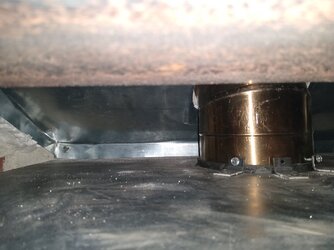
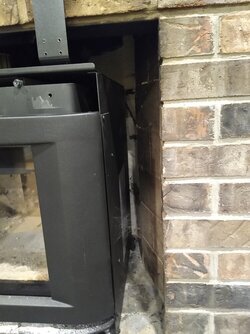
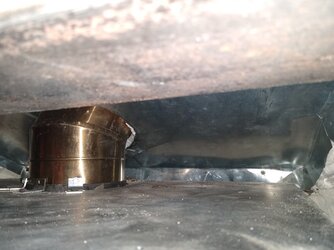
We recently converted a masonry wood-burning fireplace to a wood-burning insert, and the performance we are getting from our insert is not what we were expecting. I am not sure if my expectations are too high or if I am doing something wrong? The insert we purchased is Enerzone Destination 2.3 (https://www.enerzone-intl.com/en/products/wood-inserts/destination-23-i-wood-insert/) Based off the specs, this insert should be able to heat up to 2,100 square feet which is the square footage of our entire house. We are not using the insert as a primary heat source but rather supplemental heat.
I am experiencing is about 3-4 hours burn cycles and about 5 degrees of increase in temperatures on the main floor where the insert resides when we burn for about 4-6 hours. The outside temperatures are approximately 25-35 degrees. The spec sheet indicates 8 hours burn cycles. I consider a burn cycle as the time from when I load the wood to when it burns down to a bed of coals. Why am I only getting about half the burn time the manual states?
I read through many threads on this website to see how to improve performance. I am burning dry hardwood (oak and ash) that is reading about 10% moisture on my moisture meter. I am loading the firebox pretty full, but I am not packing it tight. I installed a block-off plate and placed 2" insulation above the plate. I did NOT place insulation around and behind the insert, but I could do if that would be recommended.
Our main level is about 1000 square feet and we have 8-foot ceilings. It's an open concept layout on the main level. Our family room has the insert which opens to a kitchen / dining room which opens to a living room and stair case that leads to the second level (which is another 1000 square feet).
I attached some photos of our insert. When the installers installed the insert, they had to chip away some of the existing brickwork to fit the insert. I am not sure if that is normal or not. Here are descriptions of the photos:
1) One photo shows above the fire insert before the block-off plate was installed.
2) One photo shows behind the fire insert
3) Two photos of the sides of the insert
4) Two photos of the block-off plate
Is what we are experiencing normal performance, or should we be getting better performance or am I doing something wrong?? Even the family room where the insert is installed does not get that warm. It increases about 5 degrees in temperature; I was thinking this room would get really warm to the point where we would want to turn down the heat. This has not been the case. It's warms the room, but not to the point where you want to turn it down.
If anyone has any input / advice for us, I'd really appreciate it.
Many thanks, Ryan









 I didn't think it would be that complicated. So you recommend shutting the air vent to the lowest setting?
I didn't think it would be that complicated. So you recommend shutting the air vent to the lowest setting?